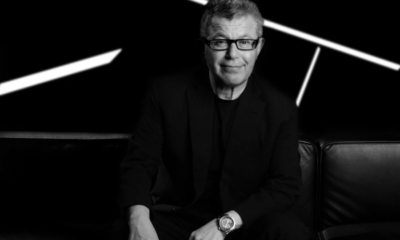In today’s digital age, photographs often capture more than just an image—they tell stories, preserve memories, and reflect the essence of the subject. Stasha Mikov, a name that has been associated with both fashion and photography, is one such figure whose image evokes curiosity and admiration. This comprehensive guide takes a closer look at the significance and impact of Stasha Mikov’s photos, exploring her background, style, and the ways in which her photographs have influenced both her career and the broader world of visual media.
Who is Stasha Mikov?
Before diving into the analysis of her photography, it’s essential to understand who Stasha Mikov is. Known for her striking beauty, graceful presence, and compelling persona, Mikov has gained recognition both as a model and as an influencer in the fashion industry. Her distinct look, which blends elegance with a bold sense of individuality, has made her a sought-after subject for photographers and creative directors alike. In addition to her career in modeling, Stasha is also passionate about art and photography, using her platform to showcase her creative works.
The Significance of Stasha Mikov’s Photos
Stasha Mikov’s photos go beyond simple portraits—they capture moments of artistry, personality, and the emotion of the subject. Whether she’s photographed in high-fashion editorials or more candid settings, her images have a way of making a lasting impression. Below are several key reasons why her photos stand out:
1. Expressive Poses and Emotional Depth
One of the defining characteristics of Stasha Mikov’s photos is her ability to convey emotion through her poses. Her photographs often go beyond the typical “pose and smile” approach, capturing a deeper sense of emotion, whether it’s subtle and introspective or bold and confident. This emotional depth allows her images to resonate with viewers on a personal level, making them more than just aesthetically pleasing.
2. Fashion-Forward and Timeless
As a model with an eye for style, Stasha’s photos are also an exploration of fashion. From haute couture to casual streetwear, her photos showcase a variety of looks that combine timeless elegance with cutting-edge trends. Her ability to adapt to different fashion styles while maintaining her unique flair makes her a versatile and in-demand subject for fashion photographers.
3. Natural Beauty with Minimal Editing
In an era where photo editing and filters are ubiquitous, Photo of Stasha Mikov photos often stand out for their natural beauty. While minimal adjustments may be made for lighting or other technical reasons, her images maintain an authentic feel that celebrates natural beauty. This authenticity is a refreshing contrast to the heavily edited, airbrushed photos that dominate much of social media today.
The Art of Stasha Mikov’s Photography: Style and Technique
Photographers who work withPhoto of Stasha Mikovare able to capture her beauty and expressiveness in a way that highlights her best features while also elevating the art of photography itself. Various elements come together to create the impactful photographs that Stasha is known for.
1. Lighting and Composition
The lighting in Photo of Stasha Mikov photographs plays a significant role in creating mood and tone. Whether it’s soft natural light or dramatic studio lighting, the use of light is essential in accentuating her features and the overall aesthetic of the shot. The composition of these images is equally important, with photographers carefully framing each shot to emphasize her form and expression in ways that make the image dynamic and visually captivating.
2. Location and Styling
Photo of Stasha Mikov photos are often taken in diverse locations—ranging from urban landscapes to nature-filled environments. The setting plays an integral role in the final image, complementing her wardrobe and the mood of the shoot. Fashion stylists also play an essential role in ensuring that Stasha’s outfits enhance the overall message of the photo. From avant-garde looks to simple, understated styles, her photos demonstrate how wardrobe and location come together to tell a cohesive visual story.
Impact on Social Media and Influence
Photo of Stasha Mikov has also become a significant figure in the world of social media. With a large following on platforms like Instagram, her photos not only showcase her work as a model and influencer but also serve as a source of inspiration for many of her followers. Her natural style and approach to self-expression have influenced countless individuals looking to find their own voice in the world of fashion and photography.
Photo of Stasha Mikov photos have sparked trends in photography, with many emulating her style or seeking inspiration from her unique poses and themes. Whether it’s a minimalist approach to composition or a particular fashion statement, her photos have contributed to shaping current visual aesthetics and fashion movements.
Conclusion
The photos ofPhoto of Stasha Mikov represent more than just images—they are an art form that blends fashion, emotion, and creative photography. Through her striking poses, attention to detail, and ability to evoke deep emotions, Photo of Stasha Mikov photographs have earned a place of recognition in the world of visual media. Her Photo of Stasha Mikov on fashion and photography continues to grow, and her photos remain a testament to the power of imagery to tell a compelling and unforgettable story.
Whether as a model or an artistic subject, Stasha Mikov’s photos will undoubtedly continue to inspire future generations of photographers and creatives for years to come.
FAQs About Stasha Mikov’s Photos
1. Who is Stasha Mikov?
Photo of Stasha Mikov is a model and influencer known for her unique blend of beauty, fashion, and artistry. She has gained recognition for her striking photos that convey deep emotion and style. In addition to modeling, she has a passion for photography and has built a strong presence on social media.
2. What makes Stasha Mikov’s photos unique?
Photo of Stasha Mikovphotos stand out for their emotional depth, natural beauty, and timeless fashion. Her poses often convey genuine emotion, and her photos maintain an authentic feel, resisting over-editing. Her ability to blend different fashion styles and settings with her unique personality makes her images captivating and memorable.
3. What is the typical style of Stasha Mikov’s photography?
Stasha’s photography style is diverse, ranging from high-fashion editorials to more candid, raw moments. She is often photographed in both urban and natural environments, with an emphasis on expressive lighting, dynamic compositions, and a focus on her natural beauty. The styling of her outfits complements the mood of each shot, adding to the overall visual storytelling.
4. How does Stasha Mikov influence social media and fashion?
With a large following on platforms like Instagram, Stasha Mikov has become an influencer in the fashion and photography world. Her photos inspire fashion trends, photography techniques, and help set new visual aesthetics. Many aspiring models and photographers look to her work for inspiration on how to incorporate authenticity and creativity into their own projects.
5. What role does lighting play in Stasha Mikov’s photos?
Lighting is a key element in Photo of Stasha Mikov photographs, as it helps to set the mood and highlight her features. From soft natural light to bold, dramatic studio setups, the careful use of lighting enhances the depth and emotion of each image. This attention to lighting contributes significantly to the overall impact of her photos.
6. Are Stasha Mikov’s photos heavily edited?
No, Photo of Stasha Mikov photos are known for their natural beauty and minimal editing. While minor adjustments may be made to optimize lighting or composition, the focus remains on authenticity and showcasing her raw, unfiltered look. This approach sets her work apart in an industry where heavy photo manipulation is common.
7. How do Stasha Mikov’s photos contribute to the fashion industry?
Photo of Stasha Mikov photos serve as a reflection of contemporary fashion trends, combining classic elegance with cutting-edge styles. Her work with various photographers and stylists helps highlight the versatility of fashion, whether through high-end couture or more casual looks. As a result, her photos influence both established fashion trends and up-and-coming styles.

 Blog7 months ago
Blog7 months ago
 News7 months ago
News7 months ago
 Blog7 months ago
Blog7 months ago
 Entertainment7 months ago
Entertainment7 months ago
 Entertainment8 months ago
Entertainment8 months ago
 Tech8 months ago
Tech8 months ago
 Business8 months ago
Business8 months ago
 Blog7 months ago
Blog7 months ago



